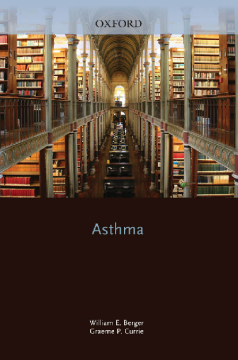
Additional Information
Book Details
Abstract
Asthma is a common, chronic inflammatory condition affecting the airways and displays a varied phenotypic picture. It is becoming increasingly recognized by healthcare workers and epidemiological studies suggest that along with other atopic diseases, its prevalence is rising. The precise etiology of asthma remains uncertain, but genetic and environmental factors such as viruses, country of origin, allergen exposure, early use of antibiotics, and the number of siblings have all been implicated in its inception and development. Pathologically, it is characterized by inflammation, physiologically by airway hyper-responsiveness (or hyper-reactivity) resulting in reversible airflow obstruction and clinically, by wheezing, chest tightness, breathlessness, and coughing. It can present itself in early childhood, as well as adulthood, and varies markedly in severity, clinical course, subsequent disability, and response to treatment. Exacerbations and symptons of asthma are the final manifestation of a complex interplay between an array of inflammatory cells and mediators, which cause airway smooth muscle to intermittently relax and contract. Despite greater knowledge surrounding the immunopathological origins of asthma and considerable advances in its management, it remains one of the most important chronic dieases in young adults, and poses a significant degree of morbidity throughout all age groups. A minority of patients experience difficulty in controlling asthma and pose significant therapeutic difficulties in specialist clinics. Exacerbations of asthma contribute to significant costs for healthcare systems and are implicated in adversely affecting the quality of life of individuals and their families. Moreover, although asthma deaths have decreased over the past few decades, an appreciable number of deaths still occur each year. Regular anti-inflammatory therapy with inhaled corticosteroids is required in all but the mildest of disease and attenuates underlying airway inflammation and hyper-responsiveness, while bronchodilators are designed to relax airway smooth muscle and prevent bronchoconstriction on exposure to bronchoconstrictor stimuli. Other forms of treatment are required in individuals with persistent symptons and exacerbations. In recent years, several potentially exciting treatments have emerged and are in varying degrees of development. Part of the newOxford American Respiratory Library, this concise, portable guide provides an essential reference on current, evidence-based medical approaches to diagnosing and managing asthma. This practical volume features chapters on the pathophysiology of the disease with information on the common symptons and potential triggers. In addition, the text includes discussions of new and emerging pharmacotherapies and complementary treatment therapies, with guidelines for sympton prevention.
